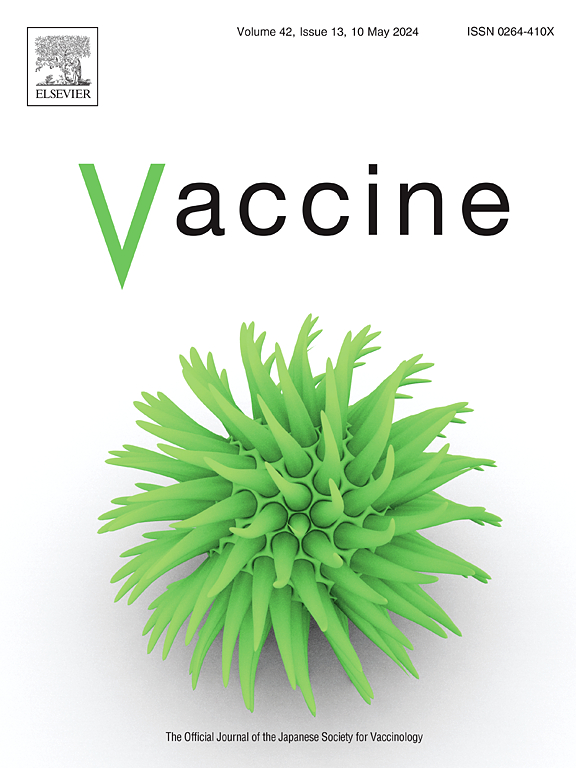教育是秘鲁成人COVID-19疫苗接种中种族差异的中介因素
IF 4.5
3区 医学
Q2 IMMUNOLOGY
引用次数: 0
摘要
covid -19疫苗挽救了数百万人的生命,尽管获得疫苗的机会仍然不平等,并受到若干潜在因素的影响。本研究旨在评估秘鲁教育水平对COVID-19疫苗接种状况种族差异的中介作用。方法基于秘鲁2022年全国家庭调查,我们进行了一项横断面研究。疫苗接种状态被定义为接受“零剂量”与“一剂或多剂”。教育水平分为低教育(无教育或初等教育)和高等教育(中等及以上教育)。使用介入性类似物进行四向分解分析,以评估教育程度在自我报告的种族(土著与混血儿,非裔秘鲁人与混血儿)与COVID-19疫苗接种状况之间的关联中的中介和调节作用。结果共纳入成人51505人。混血儿自述为最常见的种族(57.9%),其次是土著(34.1%)和非裔秘鲁人(8.0%)。土著和非裔秘鲁人未接种任何COVID-19疫苗的绝对风险分别比混血儿高出14和28个百分点。在两个种族的对比中,大约30%的差异是由教育水平介导的。参考和中介相互作用的贡献可以忽略不计,表明在这种差异中缺乏交叉性。结论非裔秘鲁人与梅斯蒂索人在成人COVID-19疫苗接种覆盖率方面的种族差异是土著与梅斯蒂索人差异的两倍。提高秘鲁少数民族的教育水平将大大减少疫苗接种覆盖率方面的种族差异。本文章由计算机程序翻译,如有差异,请以英文原文为准。
Education as a mediator of ethnic disparities in adult COVID-19 vaccination in Peru
Background
COVID-19 vaccines have saved millions of lives, although access is still unequal and subject to several underlying factors. This study aimed to evaluate the mediating role of educational level on ethnic disparities in COVID-19 vaccination status in Peru.
Methods
We performed a cross-sectional study based on Peru's 2022 National Household Survey. Vaccination status was defined as receiving ‘zero doses’ versus ‘one or more doses’. Education level was categorized as low education (none or primary) and high education (secondary and higher). A 4-way decomposition analysis using interventional analogues was performed to assess the mediating and moderating roles of educational attainment in the association between self-reported ethnicity (Indigenous vs Mestizos, and Afro-Peruvian vs Mestizos) and COVID-19 vaccination status.
Results
A total of 51,505 adults were included. Mestizo was self-reported as the most common ethnicity (57.9%), followed by Indigenous (34.1%) and Afro-Peruvian (8.0%). Indigenous and Afro-Peruvians had an absolute risk of not receiving any COVID-19 vaccination that was 14 and 28 percentage points higher, respectively, in comparison to Mestizo ethnicity. About 30% of the observed disparity was mediated through education level in both ethnic contrasts. The contributions of reference and mediated interactions were negligible, indicating an absence of intersectionality in this disparity.
Conclusion
The ethnic disparity in adult COVID-19 vaccination coverage between Afro-Peruvians and Mestizos is twice as large as the disparity between Indigenous people and Mestizos. Increasing education levels for minority Peruvians would substantially diminish ethnic disparities in vaccination coverage.
求助全文
通过发布文献求助,成功后即可免费获取论文全文。
去求助
来源期刊

Vaccine
医学-免疫学
CiteScore
8.70
自引率
5.50%
发文量
992
审稿时长
131 days
期刊介绍:
Vaccine is unique in publishing the highest quality science across all disciplines relevant to the field of vaccinology - all original article submissions across basic and clinical research, vaccine manufacturing, history, public policy, behavioral science and ethics, social sciences, safety, and many other related areas are welcomed. The submission categories as given in the Guide for Authors indicate where we receive the most papers. Papers outside these major areas are also welcome and authors are encouraged to contact us with specific questions.
 求助内容:
求助内容: 应助结果提醒方式:
应助结果提醒方式:


